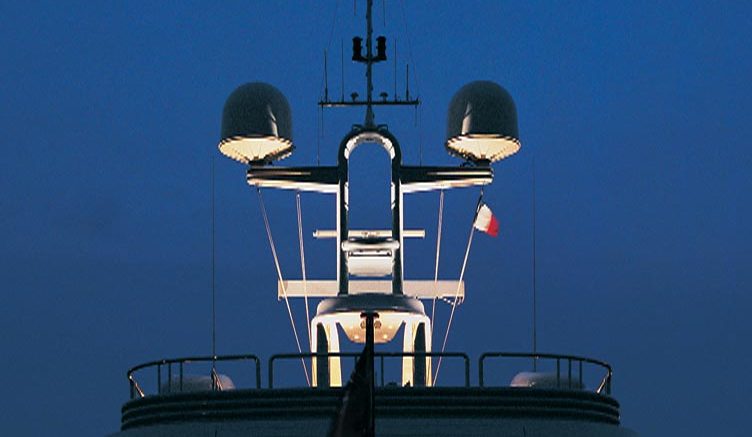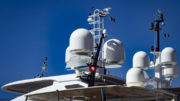Satellite TV is still the dominant choice for home entertainment. Don’t let the numbers fool you. Yes, satellite companies have lost subscribers lately. But they still have a massive footprint on land. And, when it comes to entertainment on the sea, satellite is the place to be. While satellite-based internet services lag behind their land-based-counterparts, you can get the exact same satellite TV experience you get at home, generally 50 miles or more offshore. In fact, if you look at the facts, satellite reception may just be better on water than on land!
Here are the facts.
There’s actually some sound science that explains why satellite transmissions come in more strongly when you’re out on the water. Let’s take a look.
No obstructions
Satellite TV is very sensitive to obstructions. Trees, other buildings, and even hills can make satellite TV harder to receive. That’s less of a problem for people in the southern half of the country but northerners need to point their dishes closer to the horizon in order to get service. It’s possible that there are things beyond your ability to see that are hurting your reception.
On the water, you are guaranteed a clear view of the sky. The only factor is your own boat. So a dish that’s installed properly should have a completely uniniterrupted view.
Less secondary noise and radiation
Satellite TV signals aren’t terribly affected by other forms of electromagnetic radiation, but that doesn’t mean they aren’t affected at all. There are all sorts of electric fields around a home, including cell signals, broadcast television, public safety, and other signals. While this is a pretty minor concern, it’s worth talking about. The satellite signal that gets to your dish is incredibly weak. It’s traveled 22,000 miles to get to you and with each mile it gets much weaker.
When you’re out for a sail, you’re also away from all other forms of electromagnetic pollution. This could make reception easier.
Out here where the air is clear
Folks in the southwest corner of the country are very aware of the effects of pollution and particles in the air. In areas where rain is rare and winds are calm, pollution rises to a certain level and stays there. It forms a stable layer which then causes even more pollution to stay close to the ground. This brown layer of smog is visible to anyone traveling up to the Southern California mountains. If visible light has a harder time getting through, then at least some satellite transmissions can have trouble as well. This can be a factor, unless you’re far from the smog. People love the clear ocean air and satellite does as well.
On the other side of the argument…
Because you’re literally out on the water, the humidity level can be higher out there than it is on land. This is especially true in the drier parts of the country. Ka-band signals such as those used by DIRECTV are scattered more easily by water droplets in the air. This isn’t a problem on a sunny day. If it’s cloudier on the water than on land, which happens commonly in the southwest, your satellite signal can be affected
But the answer is clear
In general, you will get better reception on the water than you do on land. The companies that make marine satellite equipment know it, too. The typical marine satellite dish is 60cm (about 24″.) The same dish used on land is 95cm (about 37″.) This 33% smaller dish, combined with sensitive auto-aiming electronics, gives you the same quality satellite picture when you’re out on the water.
If you’re ready to enjoy nights relaxing on the water while watching the best televised entertainment, contact the experts at Signal Connect! They’ll help you get set up with a marine satellite system that’s perfect for you! Call them now at 888-233-7563, or if it’s after East Coast business hours, fill out the form below and the experts will get back to you!





